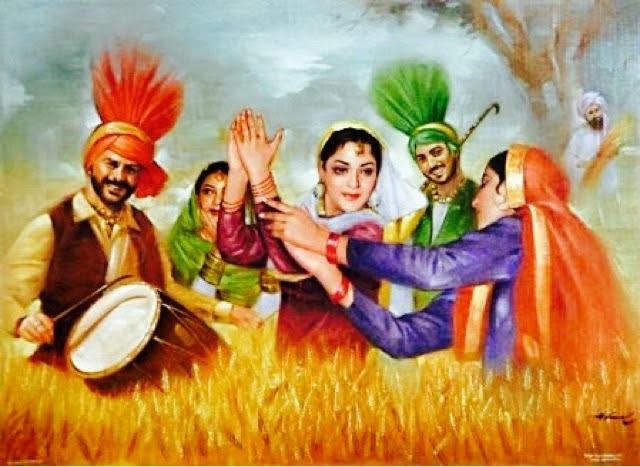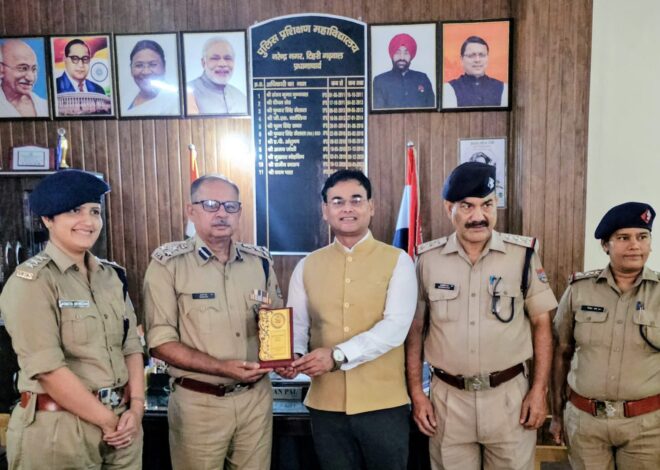
Vaisakhi – a festival that inspires national resurgence
*Vaisakhi – a festival that inspires national resurgence*
(Subhash Anand)
India is a country of fairs and festivals. Some of these are related to religion, some to history and some to weather. The vibrant festival of Vaisakhi celebrated with great enthusiasm in Punjab is basically a seasonal festival. This festival is celebrated with great enthusiasm and excitement on the arrival of the crops prepared by the farmers with their blood and sweat. This festival is also a symbol of the spirit of brave and self-respecting Punjabis.
The tenth Guru of the Sikhs, Govind Singh Ji, established the Khalsa sect on this day, due to which the greatness and dignity of this festival increases further. This festival is also associated with the freedom struggle of India. On this day in 1919, the British government attacked the freedom fighters in Jallianwala Bagh.
During the time of Guru Govind Singh Ji, the social and political condition of the country was so terrible that the morale of the people had completely fallen. They were not even able to protect the honour of their daughters and daughters-in-law from foreign looters. Hindu girls and daughters-in-law were bought and sold in the market for a few pennies. The honour of Hindu daughters and daughters-in-law was looted openly. Guru Ji could not see this situation and he decided to bring about a change in the society. To fulfil his objective, Guru Ji ordered his followers living in the country and abroad to reach Anandpur Sahib on the day of Baisakhi. According to historians, more than 80 thousand people reached there. Kirtan started. After the kirtan ended, Guru Ji addressed the people with full enthusiasm, holding a naked sword. Dear Sadh Sangat, at this time all peaceful ways to save humanity have been closed. To save humanity, I need some sacrifices. So that humanity can be protected and human life can be safe. As soon as Guru Ji asked for the head, Bhai Dayaram of Lahore, who was a Kshatriya by caste, came on the stage to offer his head.
Guru Ji took him to a tent and after some time returned on the stage with a blood stained sword. He asked for another head; this time on his request, Bhai Dharamdas Jat from Delhi came. On Guru Ji’s request, Guru Ji took three others Himmat Rai from Orissa, Bhai Mohkam Chandra from Dwarika and Bhai Sahib Chandra from Vidar to the tent.
After some time, Guru Ji came on the stage with these five. People sitting in the pandal were surprised to see these people alive. All five were wearing similar clothes. Guru Ji prepared Amrit from sugar candies in a bowl (iron vessel) and fed it to all five.
Eradicating the caste distinction, he named them the five beloved ones. Also, he ordered them to wear the five K’s- Kesh-Kangha-Kada-Kachha-Kirpan. He always inspired people to stay away from intoxication, not to cut hair, not to eat halal meat, to avoid adultery, to earn bread from hard earned money, to eat together, to live a truthful and humble life and to donate one-tenth of their earnings for social work.
History is witness that by following these teachings of Guru Ji, Punjabis showed bravery against injustice and oppression of the huge Mughal and British empires. They even sacrificed their lives but did not abandon the orders of Guru Ji even in difficult circumstances. But nowadays some youths pretend to follow the path of Guru Govind Singh Ji, but are stuck in the quagmire of addiction. One cannot become a Sikh just by having a beard, hair and wearing a turban. A real Sikh is one who follows the path shown by Guru Ji. He himself bears pain and gives happiness to the human society.
On 13 April 1875, the world famous saint Swami Dayanand Saraswati founded the Arya Samaj and brought revolution in the society. On this day, after conquering Lahore, Sher-e-Punjab Maharaja Ranjit Singh laid the foundation of the Sikh state in Punjab.
On 13 April 1749, General Jassa Singh formed the Khalsa Dal on the day of Baisakhi and gave a new slogan ‘Wahe Guru Ji Ka Khalsa – Wahe Guru Ji Ki Fateh’ and the day of Baisakhi on 13 April 1919 still screams and narrates the story of the atrocities of the British. On this day, the British carried out a brutal massacre in Jallianwala Bagh.
The importance of Baisakhi festival also increases because on this day the Samvat also begins. It is said that on Baisakhi, day and night are equal. It is believed that if it rains on Baisakhi day, it is an auspicious sign of a good harvest next year. Baisakhi is considered the first day of the solar year, because on this day the Sun enters its first zodiac sign Aries and that is why this day is also called Mesha Sankranti.
After losing everything to the Kauravas, Draupadi had expressed her desire to take a bath on the day of Baisakhi during her exile with the Pandavas. To fulfill Draupadi’s wish, the Pandavas had built a Dhara Mandal in Pijaur. On 13 April 1763, a Pandit pleaded before the sect that the Nawab of Kasur, Usman Khan, had forcibly taken away his daughter. The Sikh sect taught to protect the daughters and daughters-in-law of others. Hari Singh picked up his sword and attacked the Nawab. He freed the Brahmin’s daughter.
Thus, while Baisakhi is a festival of happiness, it is also associated with religious and freedom struggle stories. (Vibhuti Features)


